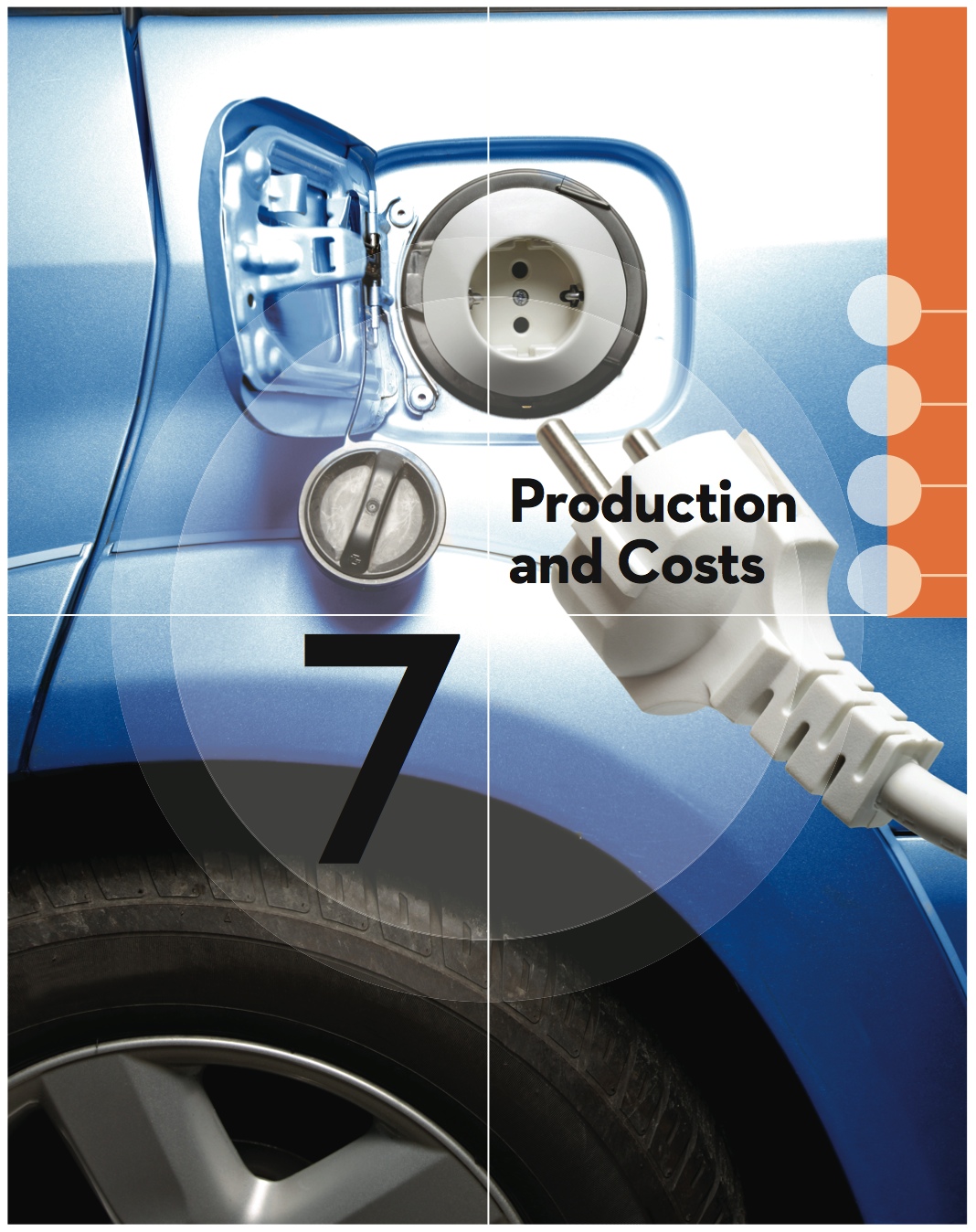Chapter Introduction
163

164
After studying this chapter you should be able to:
- Describe the nature of firms and markets.
- Explain the difference between accounting and economic costs and how they affect the determination of profits.
- Differentiate between the short run and long run.
- Describe the nature of short-run production, total product, marginal product, and average product.
- Differentiate among increasing, constant, and decreasing returns.
- Describe and compare the differences among fixed costs, variable costs, marginal costs, and average costs.
- Explain the importance of marginal costs in a firm’s production decision.
- Use graphs to show the relationships among short-run average variable cost, average total cost, and marginal cost curves.
- Describe long-run costs.
- Describe the reasons for economies and diseconomies of scale.
Twenty years ago, most people did not think much about what they could do with sustainable products. Energy and gas prices were low, and the problem of climate change was not very prominent in everyday discussions and news reports. This has changed, and many people today do think about the impact their consumption habits have on the environment. This has led to a rise in demand for energy-efficient products to address not only climate change issues but also wallet issues as rising energy costs take a greater share of a household’s budget.
In the automobile industry, the use of sustainable energy resources such as ethanol remains expensive. However, in the mid-1990s manufacturers foresaw an opportunity to satisfy consumer demand for cars that achieve much greater fuel efficiency, resulting in a similar effect as using sustainable energy. In 1997, Toyota unveiled the Prius, the first well-selling car to use hybrid electric technology.
Creating a new type of car, especially one that runs on a new source of energy, is not like creating a new type of pizza. It costs much more to develop, design, and produce the very first car. Toyota invested over $1 billion to develop the Prius, a great deal of money for a new compact car in an untested market. What motivated Toyota to undertake such an expensive investment? The answer is profits.
Profits are one of the most important goals of firms. To determine profits, a firm must calculate its revenues from sales and subtract all of its costs. How does a firm measure these costs, and what do these costs include?
In this chapter, we look at what motivates firms to do what they do—profits. We then look at the production and cost part of the profit equation. We discuss the concept of profit as properly understood by economists. Unlike an accountant or agents of the Internal Revenue Service, economists use a different measure of profit, one that takes into account explicit (out-of-pocket) costs and then adds the opportunity costs (the value of forgone opportunities) of a business decision. We then go on to discuss the production process and how output is determined based on the amount of inputs used. Finally, we take a look at the measurement of costs. Specifically, economists break down costs into different categories in order to create decision rules that firms follow to maximize profits. In subsequent chapters, we add in the revenue part to the production part. In this way, we will discover what lies behind supply curves.